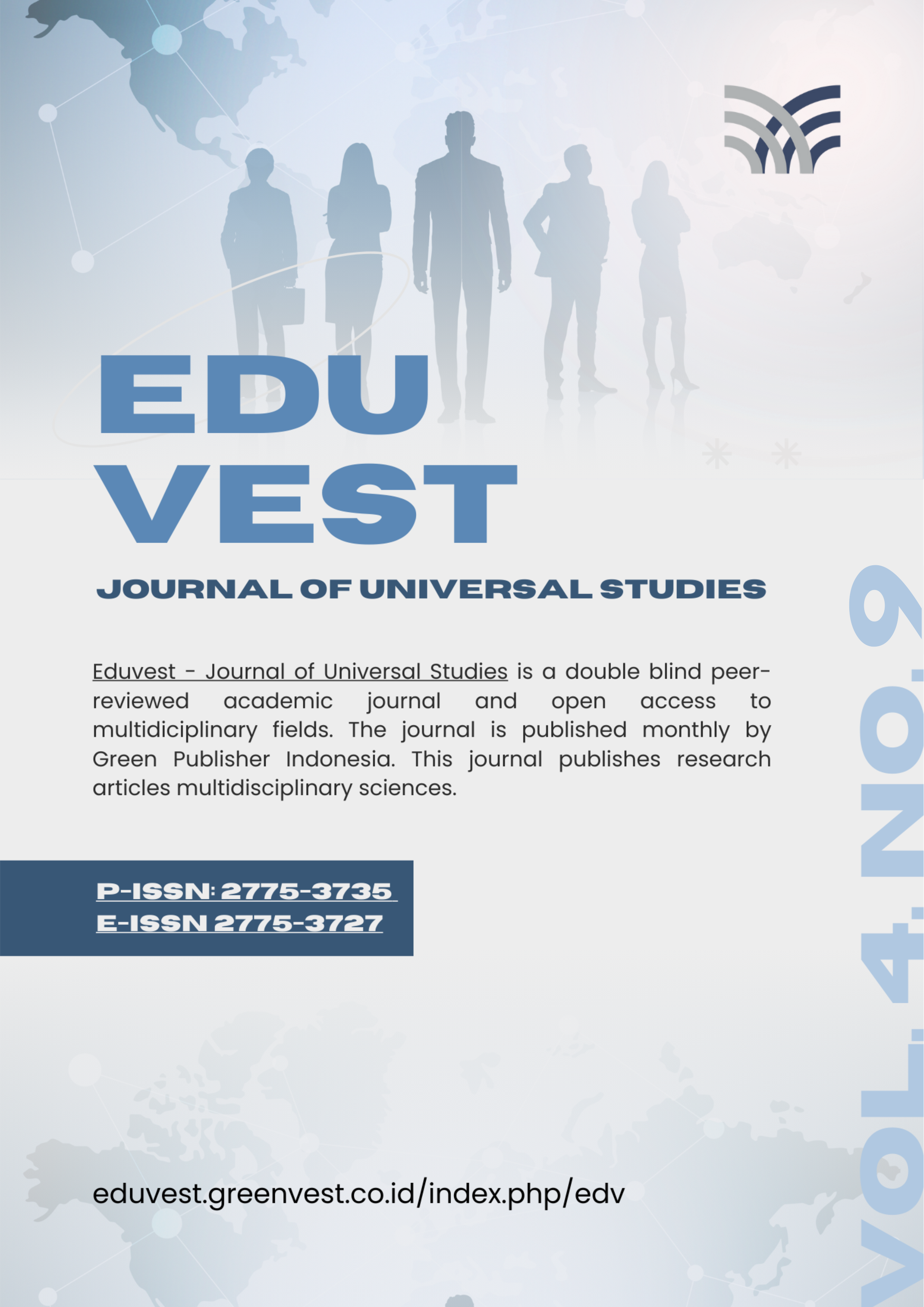Profile of Oral Corticosteroid Use in Patients in Madiun City Pharmacies
DOI:
https://doi.org/10.59188/eduvest.v4i9.6268Keywords:
Pharmacy, Deksametasonsone, Corticosteroids, Metilprednisolonrednisolone, ProfileAbstract
Hyperglycemia induced by corticosteroid use depends on the dose, indication and setting of use. The type of corticosteroid that causes a greater degree of hyperglycemia is the use of Deksametasonor metilprednisolonrednisolone compared to prednisolone or hydrocortisone. High risk of hyperglycemia due to the use of oral corticosteroids, especially Deksametasonor metilprednisolonrednisolone. The aim of this study was to determine the profile of oral corticosteroid use in Madiun City pharmacies. This research is an observational study using retrospective data. Where data was obtained from profile data on the use of oral corticosteroids in one of the pharmacies in Madiun City. Then the data is analyzed, percentages are calculated and presented in the form of tables, graphs and diagrams. The results obtained were that the number of oral corticosteroids used in Madiun City pharmacies in 2022 was 44,270 tablets and increased in 2023, namely 50,680 tablets. Meanwhile, the type of oral corticosteroid that is widely used is metilprednisolonrednisone 4 mg, namely 13,090 tablets (29.57%) in 2022 and 14,950 tablets (29.50%) in 2023. The increase in the use of metilprednisolonrednisolone 4mg from 2022-2023 is 1,860 tablets . The conclusion of this research is that the use of oral corticosteroids in Madiun City pharmacies in 2022 and 2023 will increase and the most common type of corticosteroid is metilprednisolonrednisolone 4 mg.
References
Kapugi, M., & Cunningham, K. (2019). Corticosteroids. Orthopaedic Nursing, 38(5), 336–339.
Li, J.-X., & Cummins, C. L. (2022). Fresh insights into glucocorticoid-induced diabetes mellitus and new therapeutic directions. Nature Reviews Endocrinology, 18(9), 540–557. https://doi.org/Li, J. X., & Cummins, C. L. (2022). Fresh insights into glucocorticoid-induced diabetes mellitus and new therapeutic directions. In Nature Reviews Endocrinology (Vol. 18, Issue 9, pp. 540–557). Nature Research. https://doi.org/10.1038/s41574
Liu, X. X., Zhu, X. M., Miao, Q., Ye, H. Y., Zhang, Z. Y., & Li, Y. M. (2014). Hyperglycemia induced by glucocorticoids in nondiabetic patients: A meta-analysis. Annals of Nutrition and Metabolism, 65(4), 324–332. https://doi.org/10.1159/000365892
Noetzlin, S., Breville, G., Seebach, J. D., & Gastaldi, G. (2022). Short-term glucocorticoid-related side effects and adverse reactions: a narrative review and practical approach. Swiss Medical Weekly, 152(0102), w30088–w30088. https://doi.org/10.4414/smw.2022.w30088
Rice, J. B., White, A. G., Scarpati, L. M., Wan, G., & Nelson, W. W. (2017). Long-term systemic corticosteroid exposure: a systematic literature review. Clinical Therapeutics, 39(11), 2216–2229. https://doi.org/10.1016/j.clinthera.2017.09.011
Suh, S., & Park, M. K. (2017). Glucocorticoid-induced diabetes mellitus: an important but overlooked problem. Endocrinology and Metabolism, 32(2), 180–189. https://doi.org/10.3803/EnM.2017.32.2.180
Published
How to Cite
Issue
Section
License
Copyright (c) 2024 Herninggar Aulia Anggani, Suci Hanifah, Oktaviarika Dewi Hermawatiningsih

This work is licensed under a Creative Commons Attribution-ShareAlike 4.0 International License.











